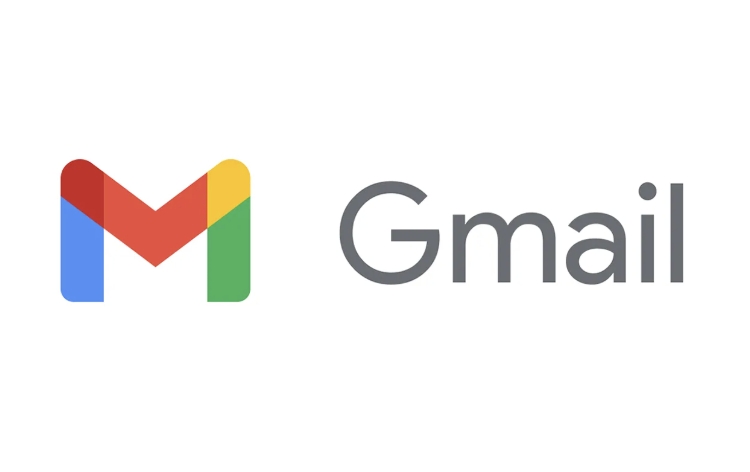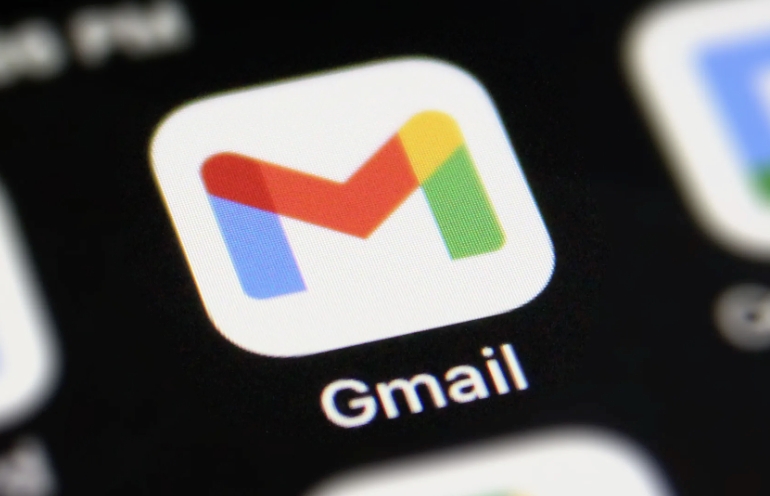Gmail add-ons enhance efficiency by automating tasks and integrating tools. 1. They are mini-applications within Gmail that automate tasks like scheduling, tracking emails, and syncing data. 2. Install them via the add-ons store found in any email's three-dot menu. 3. Popular options include Boomerang for scheduling, Mailtrack for read receipts, DocuSign for signatures, and Trello for task creation. 4. Manage add-ons through their panel or Gmail settings, noting limited mobile support.

Gmail add-ons can actually save you a lot of time if you know how to use them properly. They’re not just extra features — they help automate tasks, integrate with other tools, and make your inbox more efficient.

What are Gmail add-ons and why use them?
Gmail add-ons are like mini-applications that work inside your Gmail interface. You install them once, and then they show up as a panel on the side or get triggered from the message composer.
The main reason people use them is to cut down repetitive tasks — things like scheduling meetings, tracking emails, or pulling data from other apps without leaving Gmail.
For example, if you often send emails with attachments from Google Drive, there’s an add-on for that. If you need to sign documents fast, there’s one for DocuSign too.
How to find and install Gmail add-ons
Finding and installing add-ons is straightforward, but it's easy to miss where they're located if you're new:

- Open any email in Gmail
- Click the three dots (
...) at the top right corner of the message pane - Choose “Get add-ons”
From there, you’ll enter the Gmail Add-ons store, which is basically a filtered version of the Google Workspace Marketplace.
Once you're in the store:
- Search by function (like "email tracking" or "CRM")
- Check ratings and permissions before installing
- Click “Install” and allow the necessary access when prompted
You only need to install an add-on once — it will appear automatically next time you open a message.

Common Gmail add-ons and what they do
Some add-ons are widely used because they solve everyday problems:
- Boomerang: Schedule emails to send later or bring them back to your inbox after a set time.
- Mailtrack: Track when someone reads your email (especially useful for follow-ups).
- DocuSign: Send and sign documents directly from Gmail.
- Trello: Attach Trello cards to emails and create new tasks quickly.
Each of these works a bit differently. For example, Boomerang adds a “Send Later” button below the send button, while Mailtrack shows a tiny icon next to each sent message once it’s been read.
Most of them also have free tiers with limited features and paid plans for full access. So don’t worry if something seems restricted — it might just be part of the trial version.
Tips for managing installed add-ons
Once you’ve added a few, you might want to tweak or remove some. Here’s how:
- Go to any email
- Look for the add-on panel on the right
- Click the three vertical dots inside the panel
- You'll see options like “Settings” or “Remove”
Also, if an add-on isn't showing up, check your Gmail settings:
- Go to Settings for Gmail
- Under the "General" tab
- Scroll to the “Add-ons” section
- Make sure the toggle is turned on
And remember: not all add-ons work on mobile. Most are designed for desktop use, so if you rely heavily on your phone, test the add-on first.
That's about it. Once you've got a couple of solid ones set up, using Gmail gets a lot smoother.
The above is the detailed content of How to use Gmail add-ons. For more information, please follow other related articles on the PHP Chinese website!

Hot AI Tools

Undress AI Tool
Undress images for free

Undresser.AI Undress
AI-powered app for creating realistic nude photos

AI Clothes Remover
Online AI tool for removing clothes from photos.

Clothoff.io
AI clothes remover

Video Face Swap
Swap faces in any video effortlessly with our completely free AI face swap tool!

Hot Article

Hot Tools

Notepad++7.3.1
Easy-to-use and free code editor

SublimeText3 Chinese version
Chinese version, very easy to use

Zend Studio 13.0.1
Powerful PHP integrated development environment

Dreamweaver CS6
Visual web development tools

SublimeText3 Mac version
God-level code editing software (SublimeText3)

Hot Topics
 How to enable the Adobe Acrobat extension in Chrome?
Jul 02, 2025 am 12:51 AM
How to enable the Adobe Acrobat extension in Chrome?
Jul 02, 2025 am 12:51 AM
To solve the problem that Chrome browser cannot preview PDFs online, 1. Install the official Adobe Acrobat extension; 2. Enter the extension page to make sure it is enabled and set to allow incognito mode to run; 3. Turn off the built-in PDF reader option in Chrome settings to set it to be opened by default with Acrobat; 4. If you encounter a prompt "Managed by Organization", you need to contact the administrator to handle it. After completing the above steps, you can directly view PDF files in your browser.
 Why are my lines not showing up in AutoCAD?
Jul 01, 2025 am 12:04 AM
Why are my lines not showing up in AutoCAD?
Jul 01, 2025 am 12:04 AM
Problems are usually caused by layer settings, viewport display, line-type scale, or graphic refresh. 1. Check whether the layer is closed or frozen, and confirm that the color is different from the background; 2. Use ZOOMEXTENTS in the viewport to ensure that the geometry is within the visual range; 3. Adjust the LTSCALE value to fix the linear scale abnormality; 4. Check whether there are color output restrictions in the printing style sheet; 5. Try the REGEN command or switch the visual style to solve the graphics rendering problem. Check the reasons in order to quickly locate the reasons.
 How to send a document for signatures with Adobe Acrobat Sign?
Jul 02, 2025 am 12:44 AM
How to send a document for signatures with Adobe Acrobat Sign?
Jul 02, 2025 am 12:44 AM
The steps to send documents for others to sign with Adobe AcrobatSign are as follows: 1. Prepare the final version of the PDF file. If there is no PDF, you can upload it to other formats to automatically convert it, and ensure that the content is correct; 2. Create a new signing process after logging in, add recipient information and set the signature location, assign permissions to each signer, and adjust the signing order; 3. Optionally set email reminders, deadlines and signature methods to improve signing efficiency; 4. Send the document after confirming that it is correct, track the signing status through the system in real time, and download a copy or resend a reminder to complete the signing process.
 How to create a neon effect in Photoshop
Jul 02, 2025 am 12:16 AM
How to create a neon effect in Photoshop
Jul 02, 2025 am 12:16 AM
The key to making neon light effects in Photoshop lies in the matching of layer style and overlay method. The specific steps are as follows: 1. Use "Inner Glow" and "Gradial Overlay" to create basic luminescence, select neon tones and adjust parameters to simulate the brightness of the lamp; 2. Add "Outer Glow" and combine "Gaussian Blur" to enhance the three-dimensional sense of the halo; 3. Improve the texture by adding noise to make the effect closer to the real neon; 4. Use dark backgrounds, projections and atmosphere materials to enhance the overall visual impact.
 How to make an image look old in Photoshop
Jul 02, 2025 am 12:47 AM
How to make an image look old in Photoshop
Jul 02, 2025 am 12:47 AM
To make pictures look age-like in Photoshop, you need to imitate the characteristics of old photos and master the key steps. First, add warm tones to increase yellow and red to reduce blue by Color Balance, or use Gradient Map to select brown and yellow gradients and adjust blending mode and opacity. Secondly, adding texture and noise can be used to control the values ??using the Add Noise filter, or overlay old photo textures and set blending mode. Again, make scratches and edge wear to download scratch maps as layers and adjust positions and modes, or use built-in filters to simulate effects. Finally, pay attention to moderate processing, use adjustment layers and masks to facilitate modification, and appropriately reduce contrast to make the picture softer and more natural.
 How to change the default comment font in Adobe Acrobat?
Jul 03, 2025 am 12:30 AM
How to change the default comment font in Adobe Acrobat?
Jul 03, 2025 am 12:30 AM
In AdobeAcrobat, the default annotation font is usually Arial or similar sans serif fonts, but can be changed by setting. 1. Create a new text comment and right-click to select "Properties"; 2. Switch to the "Font" tab page and select font, font size and color; 3. Check "Set as Default" to make subsequent comments use the font. If you need global settings, you should go to Preferences > Comments > Multi-appearance > Edit Properties to adjust the font options. Notes include: Settings may only be valid for the current document, non-standard fonts, or protected PDFs may restrict changes, and it is recommended to test common fonts in advance to ensure compatibility.
 How to colorize a photo in Photoshop using neural filters
Jul 02, 2025 am 12:33 AM
How to colorize a photo in Photoshop using neural filters
Jul 02, 2025 am 12:33 AM
When using neural network filters to color photos in Photoshop, you need to pay attention to key steps and details. First, make sure that the software version supports this function, log in to the Adobe account and download and install the filter plug-in; then open the "Smart Coloring" option, and let the AI ??automatically finish the coloring after downloading the model; then check the results, use the brush tool, local application filters or combined with desaturation to manually color the error area; finally, after confirming that the effect is correct, export and save, it is recommended to keep the two versions of the AI ??layer and the final product. Although the entire process is simple, you need to pay attention to network connection, model loading and post-adjustment techniques.
 How to transfer an Adobe Acrobat license to a new computer?
Jul 04, 2025 am 12:01 AM
How to transfer an Adobe Acrobat license to a new computer?
Jul 04, 2025 am 12:01 AM
To transfer the Adobe Acrobat license to a new computer, you must first log out on the old device and release the activation permission, and then complete the activation with the new computer login account. The specific steps are: 1. Open Acrobat on the old computer and click on the avatar or "Help" > "Log out" to log out; 2. Download and install Acrobat for the new computer and log in with the original account to automatically identify the license; 3. If the activation fails, check the network, clear the cache, unbind the old device through the Adobe account page, or contact customer service to solve the problem. The key point is to ensure that the old device has been logged out, clear the local cache and update the online device list before the migration can be completed smoothly.






